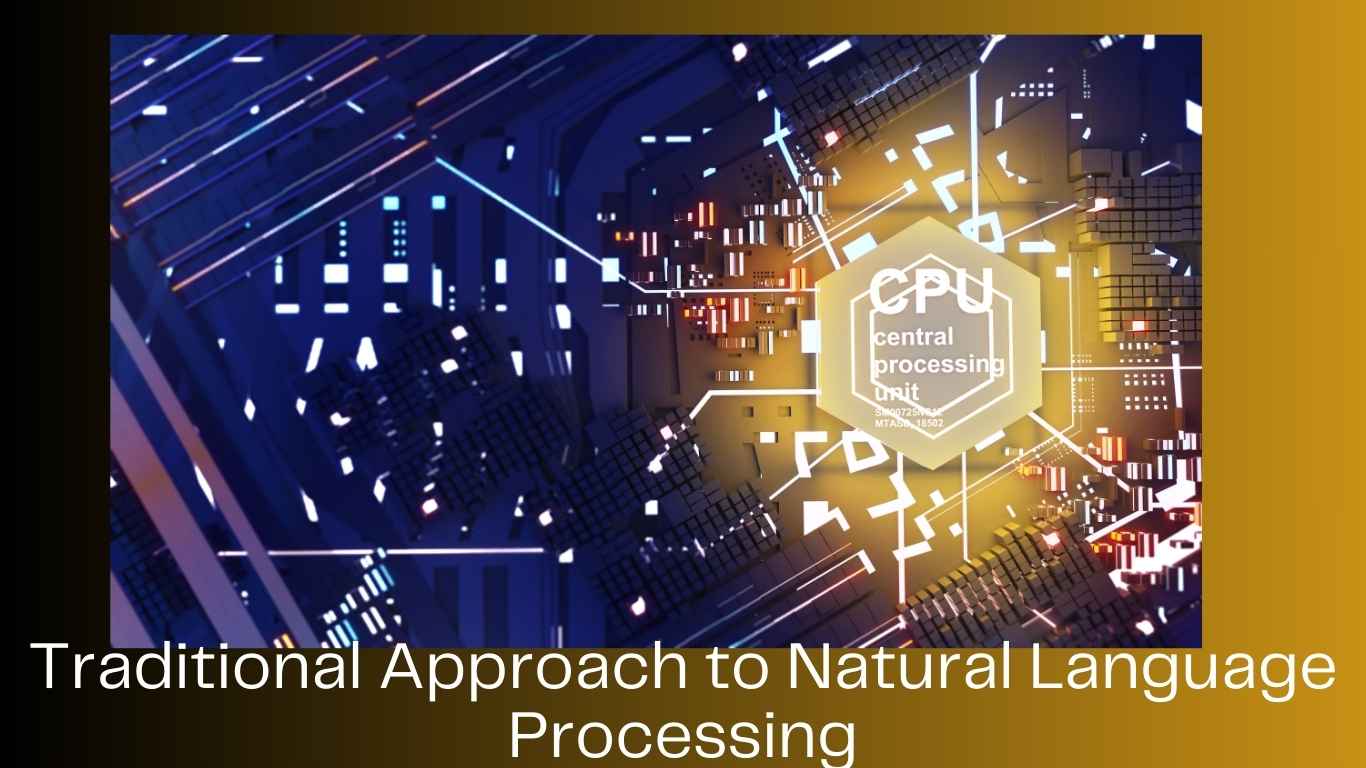Traditional Approach to Natural Language Processing 2025
📚 Traditional Approach to Natural Language Processing: Rule-Based Methods Explained
Natural Language Processing (NLP) is a branch of Artificial Intelligence (AI) that helps machines understand, interpret, and generate human language. While modern NLP is dominated by deep learning models like ChatGPT, BERT, or T5, it’s important to understand the traditional approach to NLP, which laid the foundation for today’s advancements.
In this post, we’ll explore:
- What traditional NLP means
- Key components of rule-based and statistical NLP
- Real-world examples
- Benefits and limitations
- How it compares with modern approaches
- When it’s still relevant today
Let’s journey back to the basics and understand how machines processed language before neural networks came into play.
🧠 What Is the Traditional Approach to NLP?
The traditional approach to Natural Language Processing refers to using hand-crafted rules and statistical models to analyze and understand language. This method involves linguistic knowledge, logic, and symbolic reasoning instead of machine learning or deep learning.
It includes two main methodologies:
- Rule-Based NLP (Symbolic AI)
- Statistical NLP (Pre-ML probability-based systems)
These systems were developed long before neural networks and transformers came into the spotlight.
📏 Rule-Based NLP: The Foundation of Language Processing
Rule-based NLP systems use manually crafted linguistic rules to process text. These rules are created by linguists, programmers, or domain experts and follow syntax, grammar, and language logic.
📜 Example of Rule-Based System
Input: “The dog barked loudly.”
Rules applied:
- Recognize nouns (“dog”)
- Identify verb (“barked”)
- Apply subject-verb-object structure
- Determine adverb (“loudly”)
Output:
Grammatical structure → [Subject: Dog] [Verb: Barked] [Adverb: Loudly]
These rules enable the system to understand sentence structure, tag parts of speech, or extract entities.
🔧 Components of Rule-Based NLP
🔤 1. Tokenization
Splitting text into words or phrases.
Example:
Input: "AI is evolving fast."
Tokens: ["AI", "is", "evolving", "fast", "."]
🏷️ 2. Part-of-Speech (POS) Tagging
Assigning parts of speech (noun, verb, adjective) based on grammatical rules.
"She reads books."
→ [She: PRONOUN, reads: VERB, books: NOUN]
🔄 3. Lemmatization and Stemming
Converting words to base form.
- Stemming: reading → read
- Lemmatization: better → good
🔎 4. Named Entity Recognition (NER)
Identifying real-world entities.
Input: “Microsoft was founded in 1975.”
Output: [Organization: Microsoft], [Date: 1975]
🧠 5. Syntax and Parsing
Analyzing the grammatical structure of sentences using Context-Free Grammar (CFG) and Parsing Trees.
💡 Real-Life Rule-Based NLP Example
In early chatbots like ELIZA (developed in 1966), pattern-matching rules were used to mimic a psychotherapist:
User: “I feel sad.”
Response: “Why do you feel sad?”
Here, a simple rule triggered a response pattern when the word “feel” was detected.
📈 Statistical NLP: Moving Toward Data-Driven Models
As computing power grew, NLP evolved into statistical methods — leveraging data and probability rather than rigid rules.
📊 What Is Statistical NLP?
Statistical NLP uses mathematical models and large text corpora to:
- Predict word occurrences
- Model sentence likelihood
- Perform classification and tagging
📦 Core Techniques in Statistical NLP
🧮 1. N-Grams
An n-gram is a sequence of n words used to predict the next word.
Example (Bigram model):
“I am” → likely followed by “happy”
“I am not” → followed by “sure”, “hungry”, etc.
🎲 2. Hidden Markov Models (HMM)
Used for tasks like:
- POS tagging
- Speech recognition
- Named entity detection
HMM predicts the most probable sequence of hidden states given an observation.
🔤 3. TF-IDF (Term Frequency-Inverse Document Frequency)
A statistical method used to find important words in a document.
Used in:
- Document classification
- Information retrieval
- Keyword extraction
🧠 4. Naive Bayes Classifier
Applies Bayes’ Theorem to predict categories such as:
- Spam detection
- Sentiment analysis (positive/negative)
- Topic classification
💡 Example of Statistical NLP in Action
Problem: Sentiment analysis for the sentence “I love this product!”
Using a pre-trained Naive Bayes model:
- Love = +0.9 (positive weight)
- Product = +0.3
- Output: 90% Positive Sentiment
This system doesn’t understand meaning but uses probabilities from word frequencies.
🔍 Rule-Based vs Statistical NLP: Key Differences
| Feature | Rule-Based NLP | Statistical NLP |
|---|---|---|
| Approach | Symbolic, logic-based | Data-driven, probabilistic |
| Flexibility | Rigid rules | Learns from examples |
| Setup | Manual effort | Requires large datasets |
| Scalability | Poor | High |
| Accuracy | High in limited domains | Better with large corpora |
🏭 Real-World Applications of Traditional NLP
💌 1. Email Spam Detection
Using Naive Bayes, spam filters analyze keywords and structure to identify spam.
📚 2. Grammar Checkers
Early tools like Grammarly (initial versions) used rule-based systems to identify sentence-level errors.
🛍️ 3. Product Review Analysis
TF-IDF and rule-based classifiers were used to extract top features and determine user sentiment.
🗣️ 4. Speech Recognition Systems
Before deep learning, HMMs were the backbone of systems like Dragon NaturallySpeaking.
💬 5. Chatbots (Pre-Deep Learning Era)
Used templates and regular expressions to generate responses based on input keywords.
🧪 Advantages of Traditional NLP
- Interpretability: Easy to understand how decisions are made
- Fast implementation for narrow, rule-based tasks
- No need for large training data
- Highly accurate in controlled environments
⚠️ Limitations of Traditional NLP
- Not scalable for open-domain problems
- Fails on unstructured or noisy data
- Hard to adapt to new languages or domains
- Lacks context awareness (can’t handle sarcasm, ambiguity)
🔗 Why Understanding Traditional NLP Still Matters
Despite the dominance of deep learning in modern NLP, traditional methods are still relevant:
- In resource-constrained applications (limited data, low compute)
- For interpretable systems (healthcare, law)
- As preprocessing tools for modern pipelines
- In education to teach fundamental linguistic principles
🤖 Modern NLP vs Traditional NLP: A Brief View
| Category | Traditional NLP | Modern NLP |
|---|---|---|
| Core Method | Rules / Statistics | Neural Networks (DL) |
| Context Awareness | Limited | High (via Transformers) |
| Learning Ability | Low | High (with training data) |
| Speed | Fast for simple tasks | Slower but more powerful |
| Tools | NLTK, SpaCy (early) | BERT, GPT, T5 |
✅ Final Thoughts: Traditional NLP is the Cornerstone of Language AI
The traditional approach to Natural Language Processing may seem outdated in the age of large language models, but it remains the backbone of many NLP tools today. From part-of-speech tagging to information extraction, rule-based and statistical systems still power a significant portion of language processing tasks.
Understanding traditional NLP gives you a solid foundation to:
- Build smarter preprocessing pipelines
- Appreciate the logic behind machine understanding
- Troubleshoot or improve modern AI systems with linguistic insight
So if you’re starting in NLP or AI, don’t skip the fundamentals. They’ll help you master both the history and future of AI-powered language processing.
Also read these




